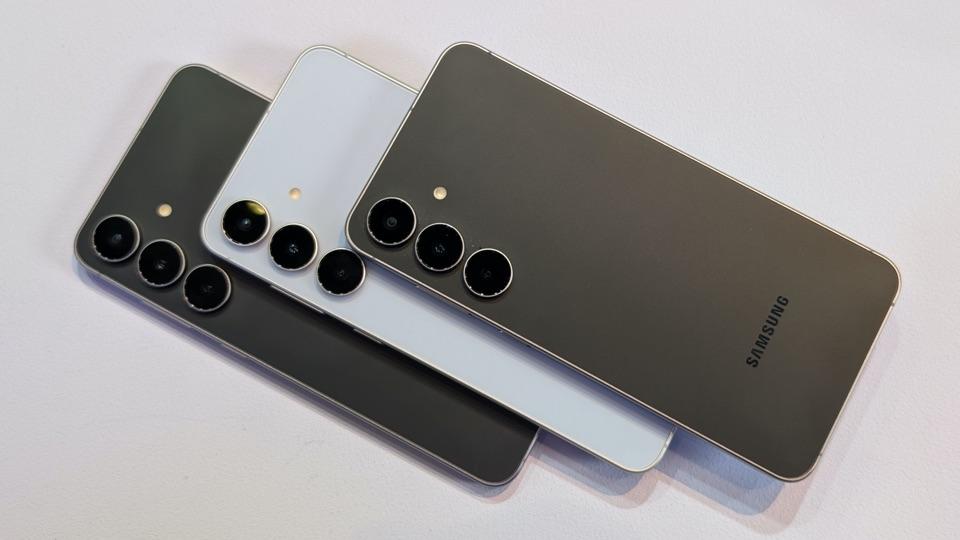The term “telepathy” was coined in 1882 by Frederic Myers to describe direct mind-to-mind communication outside known sensory channels. No scientific evidence yet supports it, but innovation is attempting to emulate it.
getty
Telepathy, the notion of humans transmitting thoughts directly from one mind to another, has been studied for over 150 years. Despite extensive research and experimentation, and the assertion from paranormal and new age beliefs, no scientific evidence currently exists to support this brain function.
If a technology were ever able to emulate such a skill, it would certainly be an intriguing prospect. Now, remarkably, a new solution called silent sense that detects signals sent from the brain to the speech system, holds the promise of delivering an experience that approximates telepathic superpowers for everyone.
The Brains Behind A New Kind Of Human-Computer Interface
Arnav Kapur is literally a wonderkid. At a young age he accumulated a long list of scientific achievements, including work at Harvard Medical School, where he was one of the first to show that mathematical techniques could be used to reliably predict patterns of human gene expression on a large scale.
Not long after, he pioneered silent speech interfaces (SSI) at the MIT Media Lab alongside his colleague Shreyas Kapur. SSI’s are technologies for detecting and capturing spoken words without the vocalization of those words. Kapur demoed a rudimentary version of the technology in 2018 to much fanfare including being featured in TIME’s list of best inventions.
Alterego founders, Arnav Kapur (left) and Max Newlon (right).
Alterego
After hitting up against some technical limitations that reduced the immediate viability of SSI’s, Kapur left the lab to pursue other interests. But just a few years later, he recognized that the advances been made in machine learning and particularly sensing technologies, were finally in a state where he could advance his ideas.
Along with his co-founder Max Newlon, they formed Alterego, to commercialize their own patented form of silent speech called silent sense.
Newlon, too, comes with a strong science and leadership background, including a graduate degree from Harvard where he studied human development, time at Massachusetts General Hospital conducting brain research, and most recently as President of brain-computer interface pioneer BrainCo.
Implementing Telepathy In An Unconventional Way
Suggestions of a wearable that is able to transmit thoughts is immediately met with surprise and concern. The latter results from initially believing that Kapur and Newlon have created something that is able to capture and communicate what a person is thinking at any moment. For most of us, that does sound unsettling! Fortunately, that’s not what their near-telepathic solution does.
In Kapur’s SSI research at MIT, he was able to identify and capture subtle signals that the brain sends to the human speech system. To be absolutely clear, the technology doesn’t monitor and detect thoughts directly in the brain. Rather, it senses information flow from the brain to the face. It’s only at this moment when a person is intending to speak that the Alterego wearable captures the words and is able to transmit them. Kapur calls this technology silent sense.
The wearable silent sense device is similar in form to open ear earphones. Inside are highly sensitive sensors that can detect specific signals deep in the mouth cavity.
To use the Alterego device, a person internally articulates, that is, they subtly engage their tongue and speech muscles as if speaking to themselves, but without producing sound, moving the jaw, or opening the lips. If they choose, they can also lightly engage their lips. The device is designed to capture this entire spectrum of articulation, from the subtlest speech intent, to silent mouthing, all the way to audible speech.
According to Kapur, it requires little to no training, you simply begin by speaking normally, then gradually reduce the effort. First to a whisper, then to silent speech with minimal mouth and jaw movement. In other words, you just keep dialing it down until you’re speaking entirely internally.
For most people, the Alterego wearable is going to have to be experienced to be properly understood. You can watch Kapur and Newlon explain it here.
A Completely New Human-Computer Interface Is Born
To communicate with computers, humans have gone from complex low-level instructions in machine code and assembly languages to higher-level ones such as Java and Python. Today, we talk to digital assistants and write generative AI prompts in our native tongue. Natural human language will soon become the default in which people communicate with and through machines.
It’s in this future that Kapur and Newlon believe their silent speech wearable will play a significant role. Alterego will enable all manner of interactions where talking is convenient and efficient, but where voice is unnecessary. For example, two or more people wearing the devices in a noisy or non-private environment can talk silently with each other.
In other example uses, it enables writing and searching on a smartphone or laptop without typing and provides the ability for people to control devices simply by issuing silent commands.
Perhaps the most impactful near-term use will be for any person who has, through a disease, accident, or otherwise, lost the ability to speak aloud. The size of the healthcare market and the benefits it can provide to people all over the world is enough to build a large and meaningful business.
In all likelihood, the most innovative uses will be the ones that we can’t even conceive of right now. That’s often the case with new, groundbreaking technologies.
Near-Telepathy As An Interface In The Intelligence Age
While other players are building telepathy technologies including Neurolink and BrainGate, Alterego’s silent sense introduces a new category of human-computer interaction. It takes us beyond keyboards, touchscreens, and the awkwardness of speaking voice commands aloud. It enables anyone to engage with information, machines, and other people simply by thinking and silent speaking. It appears perfectly suited for the emergent intelligence age, a period that will be defined by humans living and working alongside thinking machines, hyperautomation, and humanoids.
Right now, Kapur and Newlon are working around the clock to prepare their wearable for buyers. There’s still a lot of work to do including making significant improvements to its current form factor.
They haven’t yet committed to a release date, but the level of interest they’ve already generated has created an obvious urgency. According to Kapur, “it’s not a long-term science project anymore.”
Their wearable solution, which is best described as a platform, has the potential to create a significant market not only for the devices themselves but an ecosystem of software, hardware, and services that will emerge around it.
Given its potential, getting it right rather than prematurely releasing a solution that’s not fully baked, is a smart approach.









